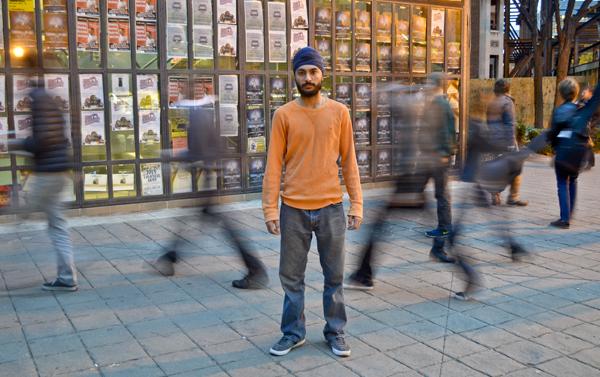Senior Sumeet Kaur was sick of the Harry Potter jokes.
Kaur, president of the Sikh Student Association, said the first installment of the series – which featured a villain who wore a turban – sparked grade-school taunts that she and other Sikhs deflected for years. Now, Kaur and fellow SSA members are pushing for more Sikh-oriented events on campus to expand public knowledge of the faith.
“Our primary focus is awareness,” Kaur said of the nearly 15-person student organization. “There are people who know [about our religion], but it’s not the majority.”
The group has seen more general student interest in its events this fall. Kaur said the group’s most successful outing was a Langar on Nov. 15 — a free, vegetarian communal meal served to Sikhs and non-Sikhs alike. About 100 students attended.
The group aims to demystify Sikhs’ religious practices, holding events like “Turban Day,” to encourage students to learn about the significance of the head piece and don it themselves. Turbans, as well as long hair, represent piety, honor and obedience to the faith.
“For me, the kid with the turban was always a mystery. And people would say, ‘Why is that there?’ and I would try to explain it to people, but explaining the foundation of a religion to second graders is pretty hard,” the organization’s treasurer Ajit Singh Gill said.
The group is trying to unite Sikhs from GW and the D.C. community, gathering SSA members for Sunday services at temples across the city.
Students are also receiving national support from organizations like The Surat Initiative, a New York-based Sikh awareness group that promoted and publicized SSA’s Sikh Awareness Day programs.
Kaur said she has been treated with suspicion and taunted for her faith. She recalled one high school classmate calling her a terrorist.
And at times, peoples’ prejudices toward Muslims were projected onto Kaur.
“I remember after 9/11, my teacher started treating me weird. My mom had to have a conference and explain that we’re Sikh and from India. My teacher says, ‘Oh! I thought you were Muslim, from Pakistan,’ and then after that she treated me better,” Kaur recalled.
Singh Gill said even in the Punjab region of India, where a large population of Sikhs live, oppression and ignorance led to waves of mass migration to the United States in the late 1940s and mid-1980s.
In 1984, a series of Sikh massacres in India led to over 8,000 deaths, and the violence prompted Singh Gill’s family to emigrate. Singh Gill’s father cut his beard and stopped wearing his turban to mask himself as Hindu and avoid becoming a target.
There are at least 280,000 Sikhs in the U.S., according to a 2012 Pew Research Center study.
Singh Gill faced bullying growing up in Baltimore, and was suspended his sophomore year of high school once for fighting another student who was making fun of his turban.
Today, Singh Gill grapples with expectations on how to dress in the professional world and how he presents himself as a Sikh college student.
“Sikhi is something I keep close to my heart, but I struggle with that – with what it means to look nice. Does it look bad if I keep my beard?” Singh Gill said. “Society makes it hard … and that ignorance hurts, especially as someone who is just trying to practice their religion.”







